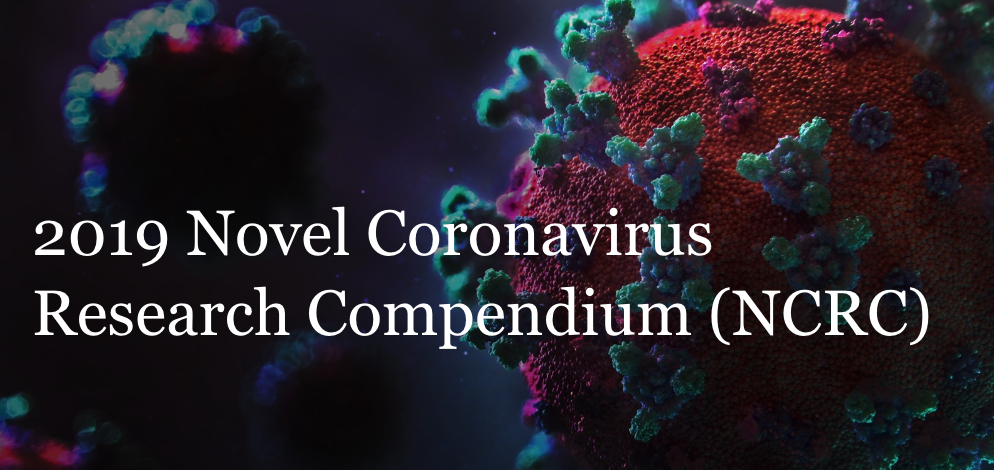Measuring infectious SARS-CoV-2 in clinical samples reveals a higher viral titer:RNA ratio for Delta and Epsilon vs. Alpha variants
This article has been Reviewed by the following groups
Discuss this preprint
Start a discussion What are Sciety discussions?Listed in
- Evaluated articles (ScreenIT)
- Evaluated articles (NCRC)
Abstract
Novel severe acute respiratory syndrome coronavirus 2 (SARS-CoV-2) variants pose a challenge to controlling the COVID-19 pandemic. Previous studies indicate that clinical samples collected from individuals infected with the Delta variant may contain higher levels of RNA than previous variants, but the relationship between levels of viral RNA and infectious virus for individual variants is unknown. We measured infectious viral titer (using a microfocus-forming assay) and total and subgenomic viral RNA levels (using RT-PCR) in a set of 162 clinical samples containing SARS-CoV-2 Alpha, Delta, and Epsilon variants that were collected in identical swab kits from outpatient test sites and processed soon after collection. We observed a high degree of variation in the relationship between viral titers and RNA levels. Despite this, the overall infectivity differed among the three variants. Both Delta and Epsilon had significantly higher infectivity than Alpha, as measured by the number of infectious units per quantity of viral E gene RNA (5.9- and 3.0-fold increase; P < 0.0001, P = 0.014, respectively) or subgenomic E RNA (14.3- and 6.9-fold increase; P < 0.0001, P = 0.004, respectively). In addition to higher viral RNA levels reported for the Delta variant, the infectivity (amount of replication competent virus per viral genome copy) may be increased compared to Alpha. Measuring the relationship between live virus and viral RNA is an important step in assessing the infectivity of novel SARS-CoV-2 variants. An increase in the infectivity for Delta may further explain increased spread, suggesting a need for increased measures to prevent viral transmission.
Article activity feed
-
-

Our take
In this preprint study which has not yet been peer-reviewed, researchers found that clinical specimens from persons infected with the Delta and Episilon variant had higher infectious viral titers (i.e., amount of replication competent virus) and infectivity (amount of replication competent virus per viral RNA copy) than clinical specimens from persons infected with the Alpha variant. This study provides biological rationale for increased transmission and spread of the Delta variant as compared to other SARS-CoV-2 variants. While this study used rigorous laboratory methods, it was limited by a lack of epidemiological data on specimens, which limits our understanding of how important factors like age or vaccination status may also impact viral RNA levels and infectious viral titer.
Study design
…
Our take
In this preprint study which has not yet been peer-reviewed, researchers found that clinical specimens from persons infected with the Delta and Episilon variant had higher infectious viral titers (i.e., amount of replication competent virus) and infectivity (amount of replication competent virus per viral RNA copy) than clinical specimens from persons infected with the Alpha variant. This study provides biological rationale for increased transmission and spread of the Delta variant as compared to other SARS-CoV-2 variants. While this study used rigorous laboratory methods, it was limited by a lack of epidemiological data on specimens, which limits our understanding of how important factors like age or vaccination status may also impact viral RNA levels and infectious viral titer.
Study design
cross-sectional
Study population and setting
This cross-sectional study used 165 clinical specimens (e.g., nasal swabs) identified to be positive for SARS-CoV-2 at the University of Washington Virology Laboratory on March 25, 2021, August 3, 2021, or August 25, 2021. Aliquots of all included specimens were frozen within two days of collection. RT-PCR was used to measure total and subgenomic E RNA levels of SARS-CoV-2. A micro-focus forming assay, which involves growing live virus, was used to measure infectious viral titers of SARS-CoV-2.
Summary of main findings
For each variant, the amount of total and E subgenomic viral RNA levels (i.e., cycle threshold values) were positively correlated with the amount of replication competent virus. Compared to the Alpha variant, the Epsilon and Delta variants had a greater number of infectious units per quantity of total RNA (i.e., infectivity) and subgenomic E RNA.
Study strengths
The study measured infectious viral titers and total and subgenomic viral RNA levels, and compared these values across variants.
Limitations
The major limitation of the study is the lack of clinical and epidemiological data that may impact viral titers (e.g., age, time since symptom onset and vaccination status). Additionally, since not all variants were widely circulating at the same time in the U.S., the included samples were not collected from the same population, nor would sample characteristics that may impact viral titers and culturable virus likely be the same across time when the samples were collected (ex: vaccination status).
Value added
This novel investigation using a micro-focus forming assay demonstrated that the Delta and Epsilon variants of SARS-CoV-2 may be more biologically infectious than the Alpha variant. This information can be useful in understanding how interventions such as masking, ventilation, etc. may need to be increased in response to increased infectivity of specific variants.
-

SciScore for 10.1101/2021.09.07.21263229: (What is this?)
Please note, not all rigor criteria are appropriate for all manuscripts.
Table 1: Rigor
Ethics IRB: The use of deidentified positive specimens for the above studies was approved by the University of Washington Institutional Review Board (STUDY00010205) Sex as a biological variable not detected. Randomization not detected. Blinding not detected. Power Analysis not detected. Cell Line Authentication not detected. Table 2: Resources
Antibodies Sentences Resources Cells were permeabilized with 0.1% 100X Triton in 1× PBS for 15 min and then incubated with a primary, cross-reactive rabbit anti-SARS-CoV N monoclonal antibody (Sinobiological, distributed by Thermo Fisher, Cat. #40143-R001 at a dilution of 1:20,000) followed by a peroxidase-labelled goat anti-rabbit antibody (SeraCare, Milford, MA, USA, … SciScore for 10.1101/2021.09.07.21263229: (What is this?)
Please note, not all rigor criteria are appropriate for all manuscripts.
Table 1: Rigor
Ethics IRB: The use of deidentified positive specimens for the above studies was approved by the University of Washington Institutional Review Board (STUDY00010205) Sex as a biological variable not detected. Randomization not detected. Blinding not detected. Power Analysis not detected. Cell Line Authentication not detected. Table 2: Resources
Antibodies Sentences Resources Cells were permeabilized with 0.1% 100X Triton in 1× PBS for 15 min and then incubated with a primary, cross-reactive rabbit anti-SARS-CoV N monoclonal antibody (Sinobiological, distributed by Thermo Fisher, Cat. #40143-R001 at a dilution of 1:20,000) followed by a peroxidase-labelled goat anti-rabbit antibody (SeraCare, Milford, MA, USA, Cat. #5220-0336 diluted to 1:4,000) and then the peroxidase substrate (SeraCare, Cat. #5510-0030). anti-SARS-CoV Nsuggested: Noneanti-rabbitsuggested: (SeraCare KPL Cat# 5220-0336, RRID:AB_2857917)Experimental Models: Cell Lines Sentences Resources Serial ten-fold dilutions of clinical sample were used to inoculate Vero E6-TMPRSS2 cell monolayers (60,000 cells/well seeded one day prior) in 96□well white polystyrene microplates (Falcon, Cat. Vero E6-TMPRSS2suggested: NoneRecombinant DNA Sentences Resources RT-PCR reactions used one of two sets of primers/probes: 1) WHO-E, using the E_Sarbeco-F/R/P set34; 2) Mills-sgE, using sgLeader-F2, sgE-R, and sgE-P23. sgE-P23suggested: NoneResults from OddPub: We did not detect open data. We also did not detect open code. Researchers are encouraged to share open data when possible (see Nature blog).
Results from LimitationRecognizer: An explicit section about the limitations of the techniques employed in this study was not found. We encourage authors to address study limitations.Results from TrialIdentifier: No clinical trial numbers were referenced.
Results from Barzooka: We did not find any issues relating to the usage of bar graphs.
Results from JetFighter: We did not find any issues relating to colormaps.
Results from rtransparent:- Thank you for including a conflict of interest statement. Authors are encouraged to include this statement when submitting to a journal.
- Thank you for including a funding statement. Authors are encouraged to include this statement when submitting to a journal.
- No protocol registration statement was detected.
Results from scite Reference Check: We found no unreliable references.
-


